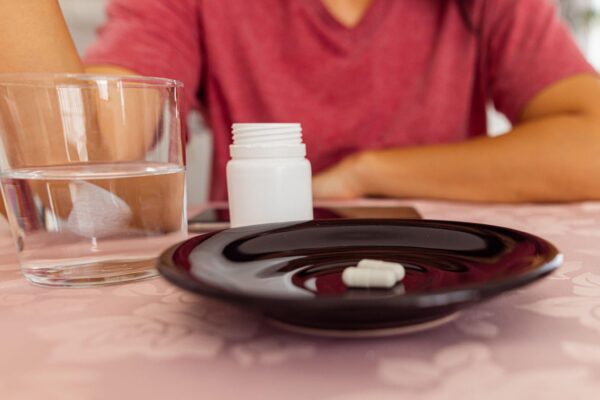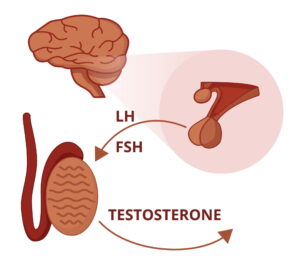The Complexity of Hormones: A Look at Male and Female Hormones
Symptoms of these fluctuations can manifest in dramatic mood changes, an increased sexual drive, and various other alterations. Unfortunately, once you reach a certain age, hormone levels decline. For women, menopause serves as a hallmark of this decrease; for men, a decrease in testosterone starts to happen around the age of 40.
If you have reservations about the level of testosterone present in your body, this article can help you gain an outline of the importance of balanced hormone levels and provide an appropriate benchmark for your age.
What are the benefits of having high levels of testosterone?
Testosterone is a hormone that has a huge impact on male bodies. It is responsible for many physiological changes, such as pubic hair growth, deepening of the voice, and sex drive. While these are the most well-known functions, the hormone actually does much more. Most of a man’s testosterone is produced in the testes, thanks to luteinizing hormone (LH). This hormone keeps the production of testosterone at 95%. The remaining 5% is created in the adrenal glands.
The production of testosterone in the body comes from the Leydig cells in the testes. It is derived from the precursor cholesterol. Therefore, if the cholesterol levels are not adequate, the testosterone levels will be low. Cholesterol is a key component in the production of both male and female sex hormones. Another hormone related to testosterone is androstenedione, which fitness enthusiasts and athletes sometimes take as a supplement to raise their testosterone levels. However, it is up for debate whether this is an ideal choice.
During adolescence, we are all aware of the changes brought about by the increased production of testosterone, but there are more:
- Muscular Strength
- Bone Density
- Red Blood Cell Count
- Behavioural Patterns
- Sexual Functionality
- Sperm Production
- Cholesterol Levels
The list of benefits is extensive, making it essential that an adequate level of testosterone is maintained in the body. Testosterone’s influence in the body is beneficial to both men and women, as it aids in physical performance and overall health.
Average Levels
At the onset of puberty, two hormones—GnRH and LH—provide the impulse for testosterone production. This is primarily intended for the development of bones and muscles, the generation of red blood cells, the deepening of the voice, the growth of hair on the face and body, and the enlargement of the genitals. It is also instrumental in facilitating normal sexual functions and reproductive capabilities.
The average testosterone level peaks at the age of 17 and may remain at a high level within the age bracket of the 20s and 30s, sometimes extending into the 40s. On a normal basis, healthy males will be able to generate around six milligrams of testosterone per day.
When it comes to the male hormone testosterone, levels tend to remain high throughout life but start to decline around 40 years of age. Unlike female hormones, several studies have suggested that testosterone levels decline at a steady pace over time.
There is no sudden and accelerated drop as a man ages. Research shows that testosterone levels decline by around 0.110 nmol/L (3.2 ng/dL) each year, which equates to a 1% drop annually. The average testosterone level can vary from person to person. Typically, they range from 270 to 1,070 ng/dL. It is important to note that testosterone levels follow a specific and regular cycle, much like the human body’s circadian clock.
Testosterone levels in the body change throughout the day. It is highest in the morning around 8 a.m. and steadily decreases until it is at its lowest just before 9 p.m. When you measure testosterone levels, the time you choose will factor into the value that is recorded.
The aging process also impacts the measurement of testosterone levels in the body. Testosterone is found in two forms: bound and free. Of these, only the free and albumin-bound forms have biological activity. As men get older, the level of sex hormone-binding globulin (SHBG) increases, which can result in a normal total testosterone count but low bioavailability of testosterone.
At 19 years of age, research has estimated the average testosterone level to peak around 15.4 nmol/L (444 ng/dL). But by 40 years old, it tends to drop to an average of 13.0 nmol/L (375 ng/dL). Age is not linked to any further drops in testosterone.
Based on American Urological Association (AUA) standards, testosterone levels are considered normal when they reach at least 300 nanograms per deciliter (ng/dL). Anything below is commonly classified as low.
Low Testosterone
As we age, testosterone levels naturally decline, leading to undesirable effects such as hair loss, difficulty building and maintaining muscle, lowered libido, mood swings, and weaker memory and focus. These levels may be further impacted by lifestyle issues such as smoking, diet, exercise, and stress. Unfortunately, this decrease in testosterone can also contribute to various health issues, including weakened bone mass and strength, reduced muscle and aerobic capacity, increased body fat and LDL cholesterol, and imbalanced cholesterol ratios.
When the body does not produce enough testosterone to support essential bodily functions, it can lead to a variety of health issues.
Final Thoughts
Hormone levels are anything but straightforward. In comparison to the female hormones that change periodically throughout the month, male hormones remain steady once a person hits his late teens. You can increase your testosterones level in a safe and effective way taking TestoPime testosterone booster here.
On the other hand, testosterone levels usually stay the same until an individual reaches his 40s. In case someone is showing signs of a low level of testosterone, TestoPrime, a natural testosterone booster, may be of aid.




